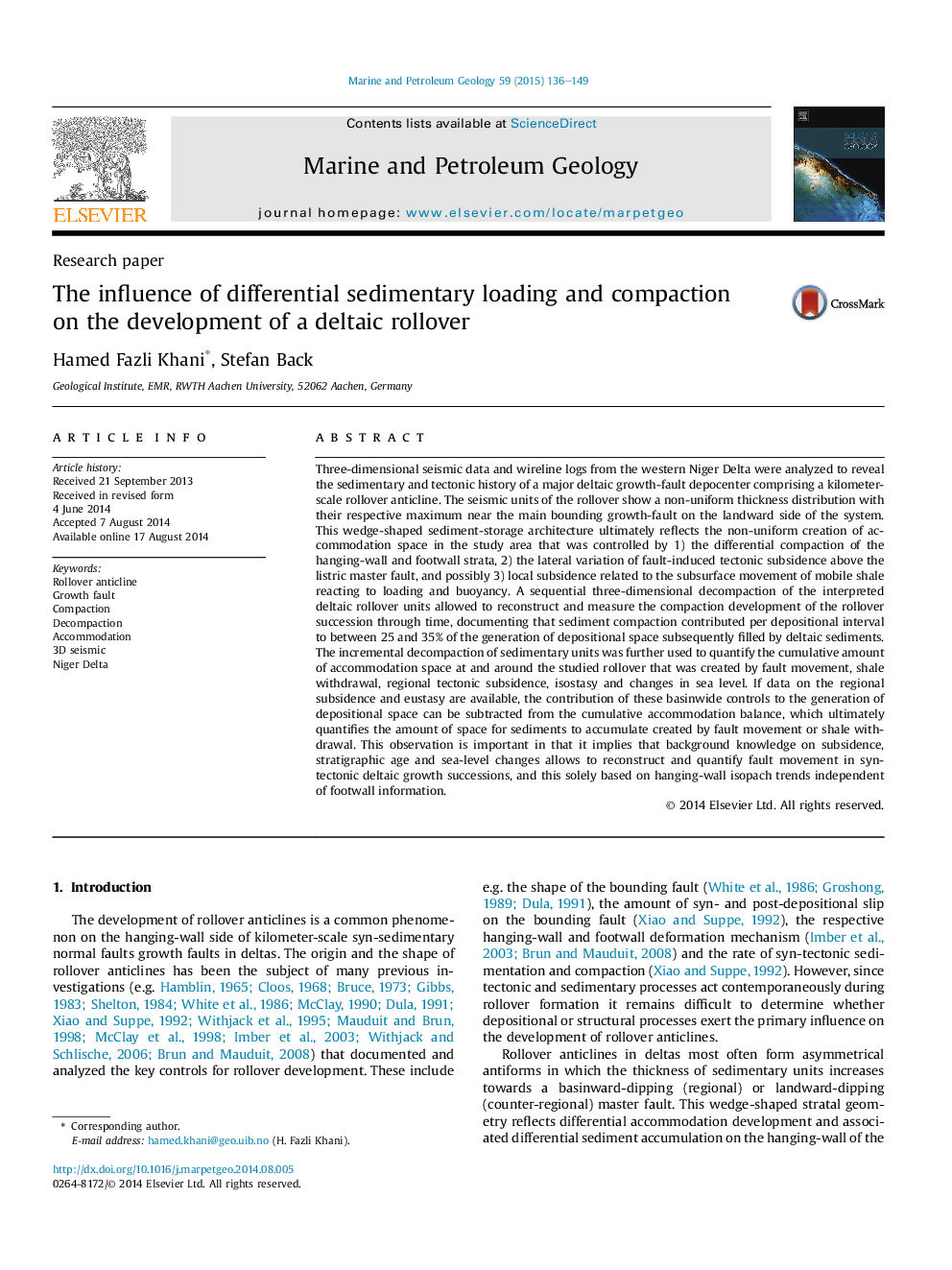| کد مقاله | کد نشریه | سال انتشار | مقاله انگلیسی | نسخه تمام متن |
|---|---|---|---|---|
| 4695612 | 1637166 | 2015 | 14 صفحه PDF | دانلود رایگان |
• Accommodation creation on a major rollover anticline in the Niger Delta.
• Development of accommodation was reconstructed by stratal backstripping.
• We used a sequential 3D decompaction.
• We show that compaction contributed to between 25 and 35% of the accommodation creation.
• Compaction contribution increases in the late-stage development of the studied rollover.
Three-dimensional seismic data and wireline logs from the western Niger Delta were analyzed to reveal the sedimentary and tectonic history of a major deltaic growth-fault depocenter comprising a kilometer-scale rollover anticline. The seismic units of the rollover show a non-uniform thickness distribution with their respective maximum near the main bounding growth-fault on the landward side of the system. This wedge-shaped sediment-storage architecture ultimately reflects the non-uniform creation of accommodation space in the study area that was controlled by 1) the differential compaction of the hanging-wall and footwall strata, 2) the lateral variation of fault-induced tectonic subsidence above the listric master fault, and possibly 3) local subsidence related to the subsurface movement of mobile shale reacting to loading and buoyancy. A sequential three-dimensional decompaction of the interpreted deltaic rollover units allowed to reconstruct and measure the compaction development of the rollover succession through time, documenting that sediment compaction contributed per depositional interval to between 25 and 35% of the generation of depositional space subsequently filled by deltaic sediments. The incremental decompaction of sedimentary units was further used to quantify the cumulative amount of accommodation space at and around the studied rollover that was created by fault movement, shale withdrawal, regional tectonic subsidence, isostasy and changes in sea level. If data on the regional subsidence and eustasy are available, the contribution of these basinwide controls to the generation of depositional space can be subtracted from the cumulative accommodation balance, which ultimately quantifies the amount of space for sediments to accumulate created by fault movement or shale withdrawal. This observation is important in that it implies that background knowledge on subsidence, stratigraphic age and sea-level changes allows to reconstruct and quantify fault movement in syn-tectonic deltaic growth successions, and this solely based on hanging-wall isopach trends independent of footwall information.
Journal: Marine and Petroleum Geology - Volume 59, January 2015, Pages 136–149
